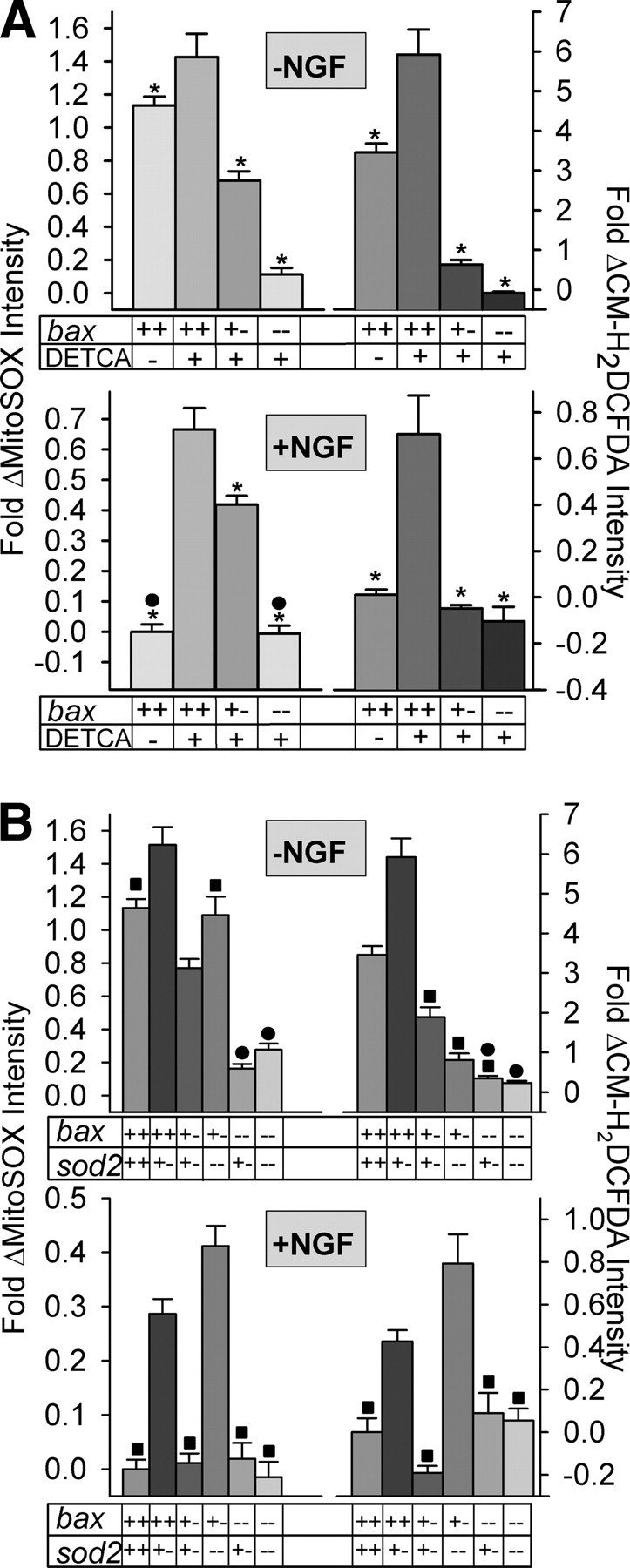Figure 3.

Elevated levels of O2·− and other ROS caused by suppression of SOD1 and SOD2 activities in NGF-deprived or -maintained SCG neurons were inhibited by reducing Bax concentration. A, The SOD1 antagonist DETCA increased O2·− (MitoSOX intensities) and other ROS (CM-H2DCFDA intensities) in both NGF-deprived and -maintained SCG neurons. This increase was inhibited in cells with genetically reduced Bax concentration and was nearly or completely eliminated in neurons containing no Bax. Cultures were pretreated for 1 h with DETCA (100 μm) before loading with the redox-sensitive dyes. Dye loading was done as described in Materials and Methods and in Figures 1 and 2. DETCA and NGF were included when appropriate in the dye-loading media and in the L-15 washes and microscopy media. n = 75–592 neurons. *p < 0.01, significantly different from DETCA-treated bax+/+ cells in each graph. ● indicate conditions that are not statistically different. B, Relative levels of O2·− and other ROS in NGF-deprived (24 h) and -maintained SCG neurons expressing different levels of Bax and SOD2. Reduction of SOD2 concentration increased ROS. This increase was suppressed in neurons with reduced Bax concentrations. n = 105–464 neurons. ■,●p > 0.01, conditions that were not statistically different within a graph. All other conditions were different (p < 0.01). bax+/+/sod2−/− neurons were not included in this study because they appeared unhealthy, likely as a result of damage induced by high ROS levels. In both A and B, MitoSOX and CM-H2DCFDA dye intensities are normalized to the intensity averages of sibling wild-type cultures not receiving apoptotic stimuli (with NGF from time of plating).
